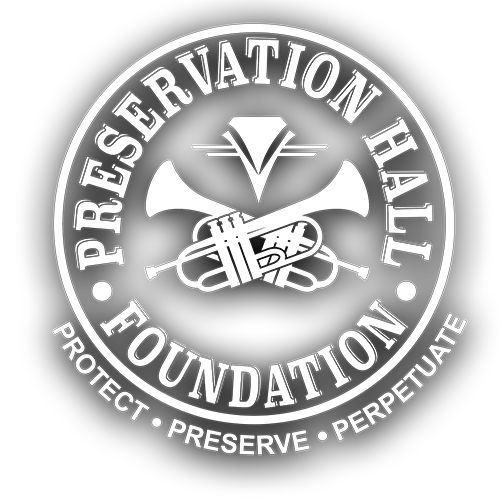Bourbon St. Parade
preservation hall foundation brass bandbook
“Bourbon Street Parade” was written by jazz drummer Paul Barbarin in 1949. It has since become a popular Traditional New Orleans Jazz standard.
Background and performance tips on
"Bourbon St. Parade"
by mark braud
New Orleans music is a celebration of diversity. The music is eclectic, combining influences from gospel, show tunes, marches, and Caribbean music.
“Bourbon Street Parade,” written by jazz drummer Paul Barbarin in 1955, is an example of early marching band music’s influence on New Orleans jazz. It highlights characteristic elements of marching band music—press rolls, a four beats to the measure bass drum pattern, and a bugle call—to remain true to the idea of a traditional march. What sets “Bourbon Street Parade” (and other New Orleans marches) apart from traditional marches are the elements of New Orleans jazz that are incorporated into the song: syncopation in the drums (accenting the fourth beat in every other measure), horns freely interpreting the melody, and improvising throughout.
Below, I recommend listening to the composer's recording featured on "Paul Barbarin and his New Orleans Jazz Men" (Atlantic Records, Jan. 7, 1955). Personnel: John Brunious (tp), Willie Humphrey (cl), Bob Thomas (tb), Lester Santiago (p), Danny Barker (banjo), Milt Hinton (bass), and Paul Barbarin (drums).
As with many brass band songs, the song begins with a drum cadence to set the tempo and feel. Notice here how the trumpet plays a two note call, from Eb concert to Ab concert; this is one way that brass bands establish the song’s key. The rigid triplet line played by the trumpet before the horns begin is a classic element of this song that is still played today to signify the end of the drum cadence and the beginning of the song.
Throughout the song, Thomas’ trombone work features small, half-step slides that are characteristic of the “tailgate” trombone style—highlighting the unique ability of the trombone to use a slide. Humphrey, the clarinetist, plays two roles: harmonizing with the trumpet and playing ornate embellishments during pauses in the melody. The drums (Barbarin) and bass (Hinton) alternate between a 2/4 march feel and a 4/4 swing feel throughout the song to lend variety and interest to groove.
Click here for the
"Bourbon Street Parade” score
“Bourbon Street Parade” by parts:
Trumpet
Trombone
Clarinet
Tenor Saxophone
Tuba
Bass Drum
Snare Drum
Have you heard about Preservation Hall Lessons?
Access complete lesson plans, exclusive video content and student materials on New Orleans music and culture for FREE at lessons.preshallfoundation.org!

